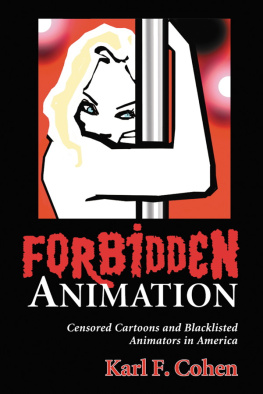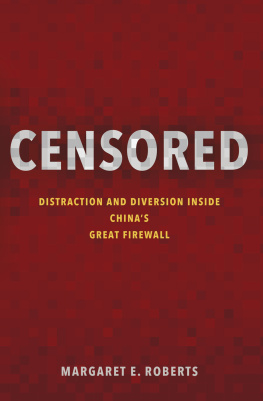

Hot Topics In The Art World
Published in association with Sothebys Institute of Art
Series Editors
Jeffrey Boloten and Juliet Hacking, Sothebys Institute of Art, London
This series of short, thought-provoking and sometimes controversial books debates key issues of current relevance to art-world professionals working in both the private and public sectors. The texts give wider visibility to some critical areas of professional art-world practice, considering what disruptors are challenging the status quo and how the art world is likely to be transformed over the next decades as a result.
International Series Advisory Board
Georgina Adam, journalist, author and art market Editor-at-Large of The Art Newspaper
Alia Al-Senussi, cultural strategist, patron, academic and lecturer
Touria El Glaoui, Founding Director of 1-54 Contemporary African Art Fair (London New York Marrakech)
Jos Hackforth-Jones, former CEO and Director of Sothebys Institute of Art, London
Louise Hamlin, Director of the Art Business Conference (London New York Shanghai)
Lluci Homs, Director of Talking Galleries, Barcelona
Zehra Jumabhoy, academic, critic and curator
Julie Lomax, CEO at a-n, The Artists Information Company, UK
Franklin Sirmans, Director of the Prez Art Museum, Miami
Philip Tinari, Director and CEO of the UCCA Center for Contemporary Art, Beijing
First published in 2022 by Lund Humphries in association with Sothebys Institute of Art
Lund Humphries
Huckletree Shoreditch
Alphabeta Building
18 Finsbury Square
London EC2A 1AH
UK
www.lundhumphries.com
Censored Art Today Gareth Harris, 2022
All rights reserved
ISBN (hardback): 978-1-84822-541-1
ISBN (eBook Mobi): 978-1-84822-544-2
ISBN (eBook PDF): 978-1-84822-542-8
ISBN (eBook ePub): 978-1-84822-543-5
A Cataloguing-in-Publication record for this book is available from the British Library
All rights reserved. No part of this publication may be reproduced, stored in a retrieval system or transmitted in any form or by any means, electrical, mechanical or otherwise, without first seeking the permission of the copyright owners and publishers. Every effort has been made to seek permission to reproduce the images in this book. Any omissions are entirely unintentional, and details should be addressed to the publishers.
Gareth Harris has asserted his right under the Copyright, Designs and Patent Act, 1988, to be identified as the Author of this Work.
Copy edited by Michela Parkin
Designed by Crow Books
Set in Caslon Pro and Sofia Pro
Printed in Estonia
Contents
Foreword
In recent years, artists and art institutions have encountered unprecedented levels of scrutiny and pressure from those who seek to determine the art that we are permitted to see, experience and admire. In this new study, leading arts journalist Gareth Harris incisively identifies and investigates the many faces of censorship confronting the principle of free artistic expression today. Invoking specific political regimes, museums, social media platforms and artistic practices, and deploying specialist knowledge and meticulous new research (including first-hand interviews), Harris exposes both the overt and the often hidden forces that operate as censors of the art that is open and available to public view.
As this study details, the censorship of art quite often dovetails with the wider societal conflicts, the culture wars that assume new forms with each new political regime, administration and/or generation. Todays vocal cancel culture is making an increasingly intense impact upon the publics perceptions, and ongoing acceptance, of artists, museums, and public monuments, and of arts role in upholding freedom of expression.
Censored Art Today skilfully clarifies the important question of what constitutes censorship in todays art world, and why it is a matter of such urgency that we understand its origins, its political ends and its consequences.
Jeffrey Boloten and Juliet Hacking, May 2022
Acknowledgements
I would like to thank those who have offered insight and commentary in relation to the text, including the numerous experts and scholars who kindly gave me their perspective on this complex, shifting topic. Special thanks go to Georgina Adam, Alison Cole, Aimee Dawson, Gaudncio Fidelis, Paul Hargreaves, Janet Harris, Andres Serrano, Emma Shapiro, Tim Schneider and Anny Shaw. Any errors are mine alone.
My thanks also go to Lucy Myers of Lund Humphries and Jeffrey Boloten and Juliet Hacking of Sothebys Institute of Art.
Introduction
We are in a new age of suppression with censorship on the rise in many different forms. Censored Art Today is a readable, informed analysis of the debates raging around censorship and so-called cancel culture, focusing on who the censors are and why they are clamping down on forms of artistic expression worldwide. Censorship is a centuries-old issue, but this publication will centre on 21st-century case studies, analysing why artists, museums and curators face restrictions and the extent to which these contemporary cases resonate. An investigation across five chapters examines why censorship has become the hottest of topics, impacting substantially on artists. Artists, museums and historic statues are, to use the contemporary term, being cancelled in an ongoing critical debate around their status and value. The perfect storm of a pandemic, the advancement of anti-intellectual populist governments worldwide, and uprisings against discrimination and inequality such as Black Lives Matter have brought about a reset of perspectives and principles. Contemporary art, and works of previous eras, are now judged by completely different, altogether more political criteria, which raises the question of whether transgressive works of art have become pawns in a polarised world, their shock value heightened and deployed for propagandistic ends. As opponents of the cancel culture often stress, most artists of the 20th century, including names such as Pablo Picasso, would by modern standards now be cancelled.
There have been flashpoints historically that dominate the contemporary art censorship debate. The most far-reaching culture war of the past half century centres on the landmark trial of 1990 when the Cincinnati Contemporary Arts Center was taken to court for showing works from Robert Mapplethorpes 1978 X Portfolio. The Cincinnati venue, which launched the Perfect Moment show in April 1990, found itself in the national spotlight when it took on conservative groups fixed on labelling Mapplethorpes work as pornography. Later that year, a court found the institution, and its then director, Dennis Barrie, not guilty of obscenity charges. The bitter public polemic the fallout of the culture war pitting orthodox against progressive standpoints focused on whether state funding, channelled via the US National Endowment for the Arts, should back exhibitions such as the Mapplethorpe show. Other art censorship sagas are ingrained on art history students minds, including Rudy Giulianis determination to scupper the Sensation exhibition when it launched at the Brooklyn Museum, New York, in 1999, with his opprobrium directed at Chris Ofilis painting
Next page












